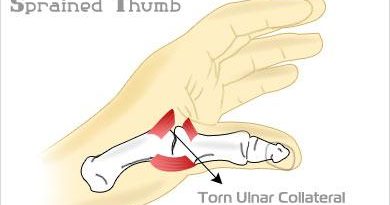Pilonidal Cyst
What Is Pilonidal Cyst?
Pilonidal cyst or cyst of the tailbone is like a large pimple that occurs at the bottom of your tailbone. Men are more prone to having it than in women. When the cyst became infected and filled with pus, it is now referred to as pilonidal abscess which is quite painful.
Truck drivers and others who sit most of the time has the higher risk of getting one. The condition is treatable. If your cyst is causing a problem, your physician can remove it through surgery. (1)

The Pilonidal Cyst or Cyst of the tailbone
Causes
The primary cause of Pilonidal cyst is the ingrown hairs. During the examination, the doctors normally find hair follicles inside the cyst. There are cases where Pilonidal is caused by trauma to that area of your body. (1)
Symptoms
The following are the common symptoms of a Pilonidal cyst: (2)
- Annoying smell from the pus
- Blood or pus draining out of it
- Fever
- Redness, swelling, and pain at the bottom of the spine
- Tenderness to the touch
- The size may vary. Some may only have a small dimple-like, or it may cover large, painful part.
Diagnosis
This condition is diagnosed by performing a physical examination. Your doctor will check on the lump or swelling part at the cleft of your buttock. If the Pilonidal cyst looks severe, an additional blood test is required for diagnosis. Imaging tests are not necessary in cases of Pilonidal cysts. (3)
Treatment
For those who have the less severe case of Pilonidal cyst, any immediate treatment is not required. However, an infected Pilonidal cyst may result in an abscess that needs incision and drainage to improve. It can be done as an out-patient or in the emergency department. The process of removing the cyst: (4)
- First, a local anesthetic is applied on the area to numb it. With the use of the scalpel, an incision will be done on the infected area to open the abscess cavity.

Removal of the cyst through surgery

Placing of gauze after the removal of the cyst
- The pus is then drained, the hair and debris are removed. Use a saline solution to clean the wound, pack it with gauze, and cover it with a bandage.
- Antibiotics are prescribed to prevent the spread of skin infection. Pain medication is also prescribed.
It is important that you visit your doctor after one to two days of surgery to make sure that the wound heals completely and to check if there are any complications. During follow up, the wound packing is removed and the wound will be examined, and replace the gauze of the wound if needed.
To help boosts, the healing process sitz baths can be done at home with warm water after the pack has been removed. The wound usually heals, after 4 weeks. Keep the wound clean and remove any hair that surrounds sacrococcygeal area to prevent reoccurrence.
In the case of reoccurrence, complication or chronic pilonidal condition, a more invasive surgery is done to remove the cysts is required. It is done in a hospital operating room. The surgical procedures will depend on the severity of your cyst.
You can decide whether to close the wound after the debridement during the procedure or you can leave the wound open and allow it to heal on its own. The recovery period generally takes several weeks, and the reoccurrence rates will vary depending on the surgical procedures done.
Another way to treat this disease is by the use of phenol injections, although this procedure is more popular in Europe than in the US. Follow-up and home care are needed to ensure proper wound healing and to manage possible reoccurrence or complications.
Home Treatment
Aside from surgery, there are home remedies that you can use in treating pilonidal cysts. (6)
Hot Compress

Hot Compress the affected area
For severe pain apply a hot compress to the affected area, this will help relieve pain. This will also help the pus and fluid accumulated in the cysts to drain easily and speed up the healing process. But this will not prevent the growth of the cysts. To do this:
- Soak a clean cloth in hot water and remove the excess water.
- Place the cloth on the affected part for a few minutes.
- Do this 3 or 4 times a day until it begins to drain.
You can also do a hot sitz bath or wash it with warm water for a few minutes.
Apple Cider Vinegar

Apple Cider Vinegar
Apple cider vinegar can have an anti-inflammatory property that reduces inflammation and pain. Also, the antibacterial and antiseptic nature of this substance stops the growth of bacteria that can trigger infection and affect the healing process. How to use:
- In ½ cup of warm water combine 2 or 3 tsp. of pure apple cider vinegar. Wet a cotton ball in the mixture and put it on the affected area for around one minute. Do this 3 or 4 times a day.
- You can also drink a mixture of 1 tsp pure apple cider vinegar in a glass of warm water. Do this twice a day.
Epsom Salt

Epsom Salt sitz bath
This substance can help reduce pain, inflammation and heal the cyst fast. The removal of pus from the cyst is hastened by it magnesium sulfate content. To apply this:
- In one to two cups of warm water add one tablespoon of Epsom salt. Mix well to dissolve the salt granules. Wet a cotton ball with the solution and place it on the affected part. Let it stay there for 20 to 30 mins. Do this once daily.
- Alternatively, you can add Epsom salt in warm water and take a hot sitz. Add one cup of the salt for every six inches of water, when using it in bath water.
Garlic

Garlic cloves
Garlic has antibacterial and antifungal properties that are very effective in treating pilonidal cysts. If taken orally, it likewise helps boost your immune system to fight infections and hasten the healing. What to do:
- Crush garlic cloves and place it on the affected part. Use a gauze to cover it and let it stay there for a few minutes, then rinse off. You can do this once a day for several days.
- Alternatively, you can crush garlic cloves and eat it two or three times a day. Drink a glass of water afterward.
Caution: Be careful of using garlic if you have sensitive skin. Do not leave it on your skin for more than ten minutes.
Aloe Vera

Aloe Vera Gel
This versatile plant can hasten healing and reduce pain and inflammation. This is due to its antibacterial and anti-inflammatory properties that are very effective in reducing the discomfort. How to apply:
- Scrape the gel from the leaf and then spread it on the affected part. Let it stay there for 15 to 20 mins. Before washing it off with lukewarm water. Do this 3 or 4 times a day.
- You can also use a cotton ball to apply the gel and let it stay there for 30 mins. Wait for 2 hours, then place again a cotton ball soaked on the fresh gel for 5 mins. You can do this treatment for a week.
Prognosis
Some people may experience the recurrence of the pilonidal cyst, as a whole the long-term prognosis is excellent. In some cases of squamous cell carcinoma occurrence, the prognosis will depend on the different factors and should be discussed with your doctor. Death due to pilonidal disease is very rare. (5)
Resources:
- http://www.mayoclinic.org/diseases-conditions/pilonidal-cyst/basics/symptoms/con-20025007
- http://www.webmd.com/skin-problems-and-treatments/guide/pilondial-cyst#1
- http://www.medicinenet.com/pilonidal_cyst/page3.htm
- http://www.emedicinehealth.com/pilonidal_cyst/page2_em.htm#pilonidal_cyst_diagnosis
- http://www.emedicinehealth.com/pilonidal_cyst/page3_em.htm#pilonidal_cysts_prognosis
- http://www.top10homeremedies.com/home-remedies/home-remedies-pilonidal-cysts.html/3
- https://www.epainassist.com/skin/pilonidal-cyst-or-pilonidal-abscess
- https://www.youtube.com/watch?v=AMK-TK23y2A
- http://discovermagazine.com/~/media/Images/Issues/2014/Oct/antibiotics.jpg
- http://pad2.whstatic.com/images/thumb/6/63/Treat-a-Pilonidal-Cyst-Step-5.jpg/aid7483024-728px-Treat-a-Pilonidal-Cyst-Step-5.jpg
- https://cdn.authoritynutrition.com/wp-content/uploads/2014/06/apples-and-vinegar.jpg
- http://www.abcnewspoint.com/wp-content/uploads/2016/08/4-4.jpg
- http://www.searchhomeremedy.com/wp-content/uploads/2013/04/Garlic1.jpg
- https://authorityremedies.com/wp-content/uploads/2016/07/Aloe-Vera-3.jpg


